Baroque pearl in southeastern Sicily
Scicli is a small Baroque gem in southeastern Sicily. The town, declared a UNESCO World Heritage Site in 2002, is now famous for its admirable Baroque architecture, “Montalbano’s places” and many folkloric festivals
The center of Scicli spreads out over a valley looking toward the sea. In the past it was perched on St. Matthew’s Hill on which the church of the same name, the city’s icon, is still visible today. After the 1693 earthquake, the settlement abandoned the hill, developing in less impervious spaces, following the late Baroque aesthetic. The result is a picturesque old town that develops around Piazza Italia, along the winding Via Francesco Mormina Penna, between the quarries of Santa Maria La Nova and San Bartolomeo and the streams of the same name, now partly covered and not visible.
Via Francesco Mormina Penna, with its gleaming basalt tiles, is the city’s living room. Elegant palaces and Baroque churches alternate along the pedestrian street in an enchanting setting. Here many will recognize the Vigata police station, one of the main television locations of Il commissario Montalbano. From Scicli to Vigata is a very short step: inside the Town Hall is the real set of the police station and the office of the Quaestor of Montelusa, originally the Mayor’s office
Among the municipalities in the province of Ragusa, Scicli has the largest coastline. Along the more than 20 kilometers, large sandy beaches alternate with gentle cliffs rich in Mediterranean scrub. The main hamlets on the coast are Donnalucata, the largest and most inhabited; Sampieri, with a very long beach ending with the striking Fornace Penna, known by many as Montalbano’s Mannara; Cava D’Aliga with its bay; and Playa Grande with the Irminio reserve.
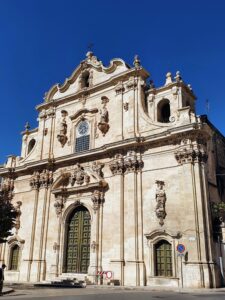
Piazza Italia is the largest square in Scicli. From the bottom of the square you can see the old Mother Church of St. Matthew and the present Mother Church, dedicated to St. William. Inside is the unmissable statue of Our Lady of the Militia, the warrior Madonna of Scicli
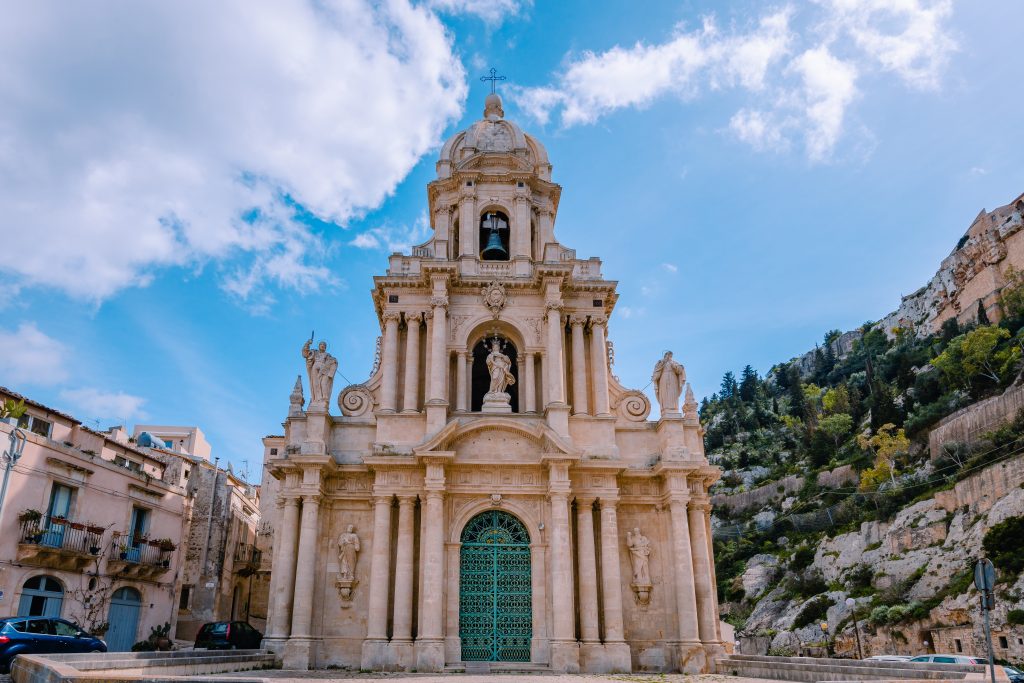
Between the rocky ridges of the St. Matthew and Cross hills stands the extraordinary St. Bartholomew's Church, one of the most interesting Baroque churches in the city. The church is also rich in treasures inside, including an 18th-century nativity scene.
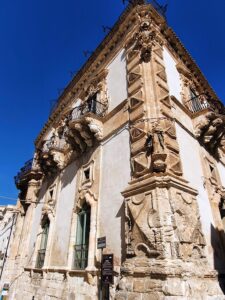
The palace is one of the most unique Baroque buildings in Sicily. It has a special corner position: the cantonment decorated with ashlars resembling diamonds acts as a hinge between the two facades. The irreverent masks, scenic balconies, and ornate corbels make it one of a kind.
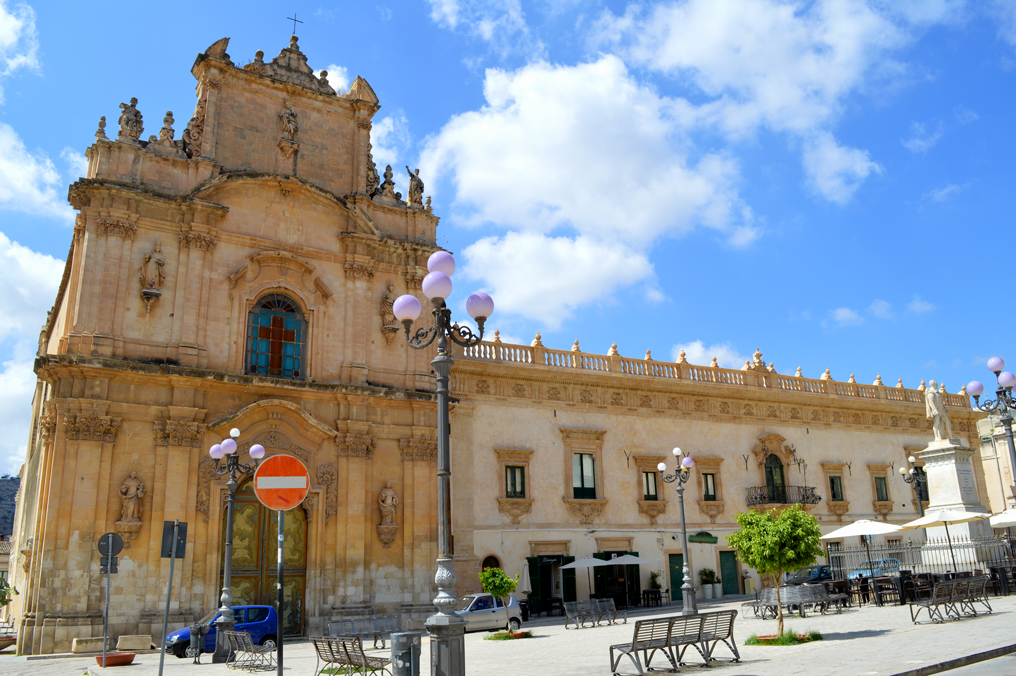
The square is dedicated to the greatest benefactor Scicli has ever had: Pietro di Lorenzo Busacca, whose statue dominates the square. The square is surrounded by elegant palaces, the former convent and the Church of Our Lady of Mount Carmel, a monumental complex in the Rococo style.
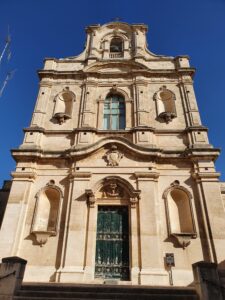
The church of Santa Maria La Nova is the largest in Scicli and is located in the Cava of the same name. The classical forms of the elevation show us the transition between Baroque and Neoclassical cultures. Inside is housed the statue of the Risen Christ, which Sciclians call 'u Gioia. The statue is the protagonist of the highly followed Easter celebration.
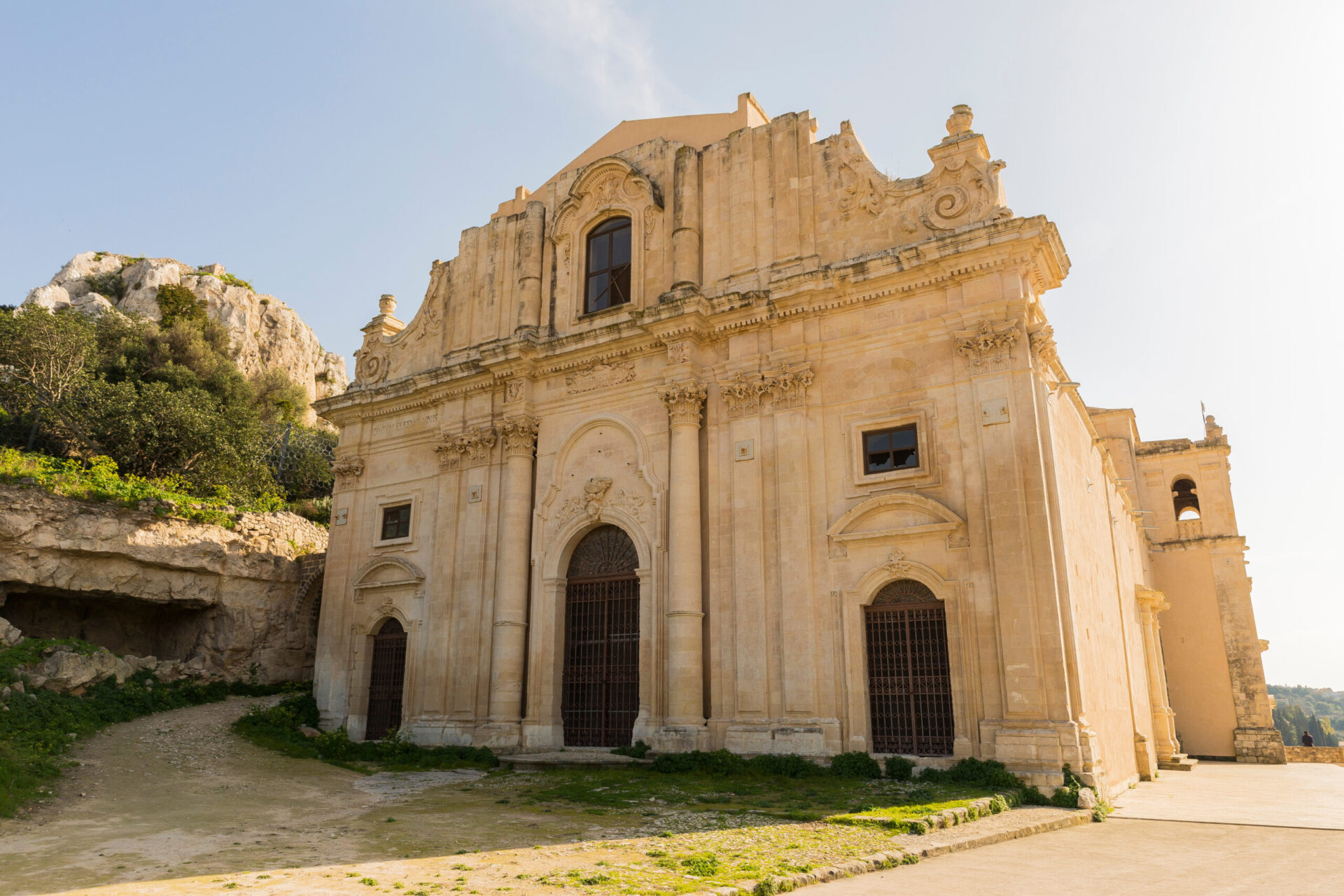
On St. Matthew's Hill, the church dominates the city and is an important landmark, visible from almost all of downtown. Destroyed by the 1693 earthquake, it was rebuilt but never completed, so much so that today it stands as a magnificent unfinished building. From the churchyard there is a beautiful view of the city and a view of the sea.
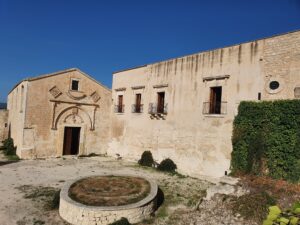
The church and convent are located on the hill of the Cross. The building was not completely destroyed by the 1693 earthquake and today it is one of the few vestiges of 16th-century architecture in Scicli. Articulated around two cloisters, it is a richly evocative museum space. From here you can admire Scicli, from multiple vantage points.
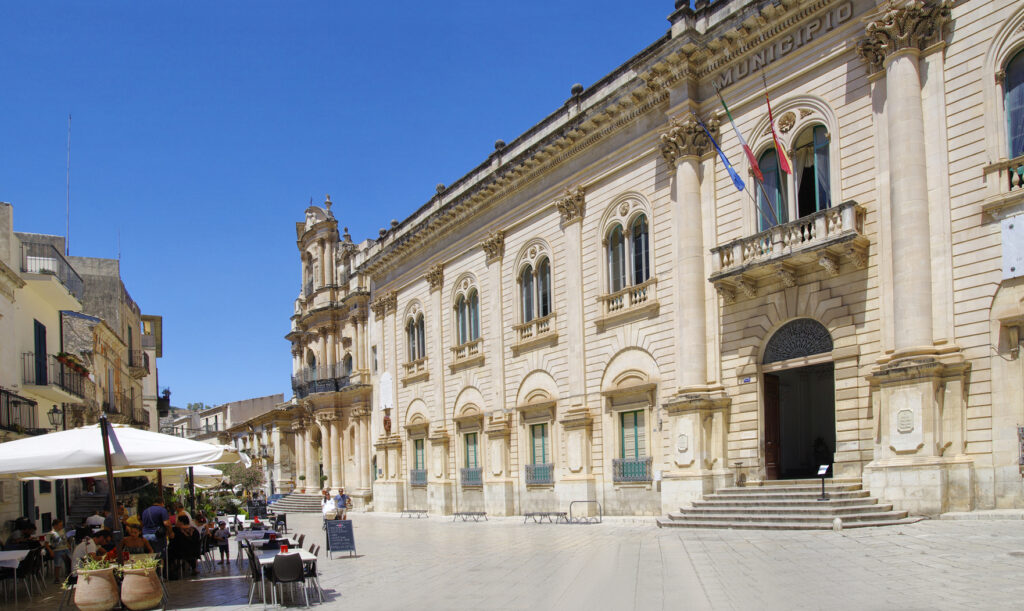
It is undoubtedly the most important and lively street in the city. There are three churches distributed along the street: the church of St. Teresa, with a sober façade and ornate interior; the church of St. Michael, with an elegant Baroque façade; and the church of St. John, which houses a curious painting of a Christ in Gonnella, the Christ of Burgos. Among the buildings, the eighteenth-century Spadaro Palace and the nineteenth-century Bonelli-Patané Palace, which combines neo-Renaissance elements with Art Nouveau interiors, as well as the Antica Farmacia Cartia, dating from 1902, are surprising. Finally, all fans of Salvo Montalbano will not fail to recognize the Vigata police station, set in the Scicli town hall building.
Find out about upcoming events in Scicli: religious festivals, exhibitions, festivals, concerts, theater performances, food and wine events, and sporting events

Activities carried out under the Rural Development Program 2014-2020 – Measure 19 “Support for leading local development,” submeasure 19.2 P.O. 2/2020
CUP G64H19000100009
© 2022 GAL TERRA BAROCCA – All rights reserved
Web Development
PI4 Ltd.